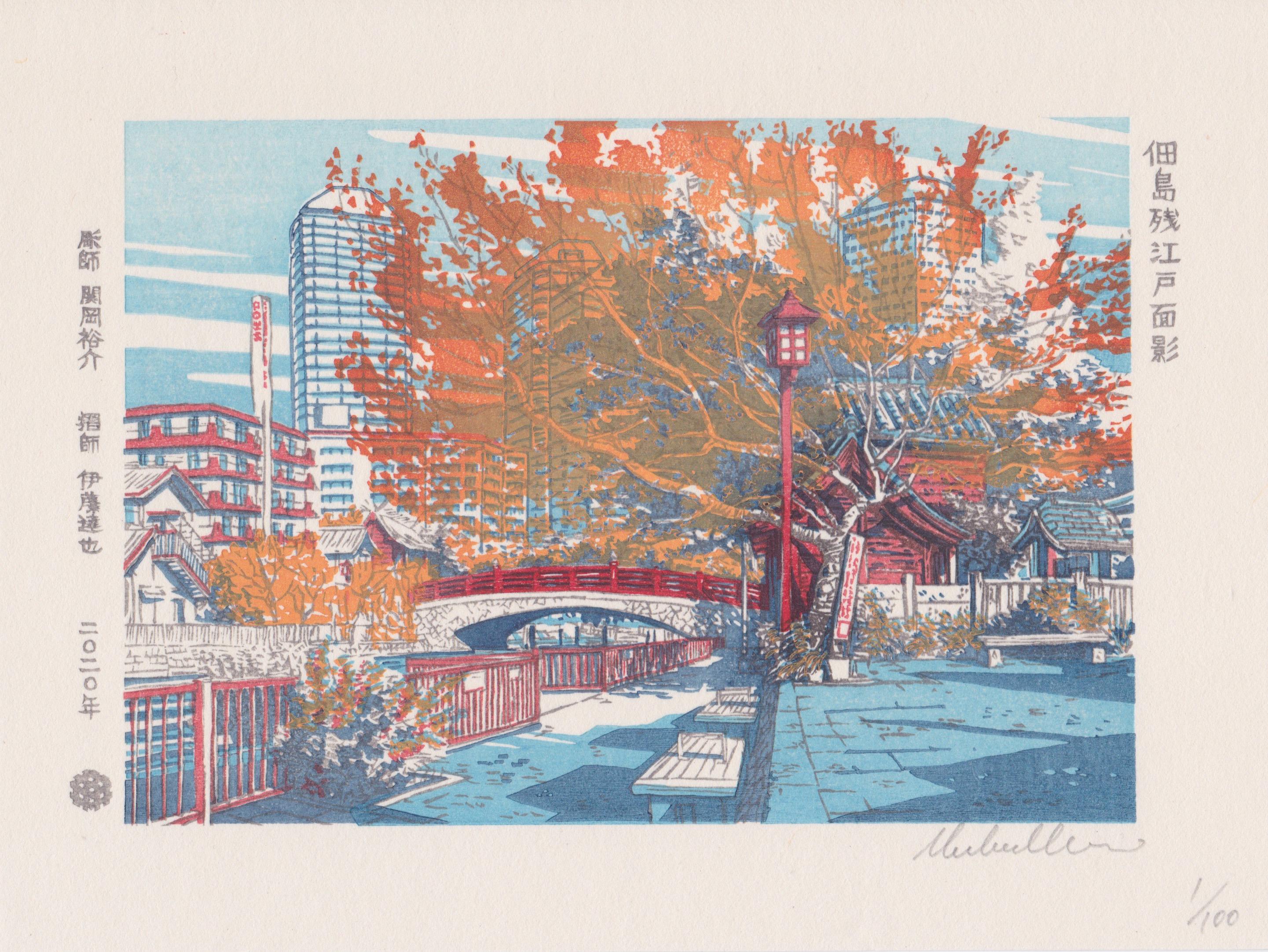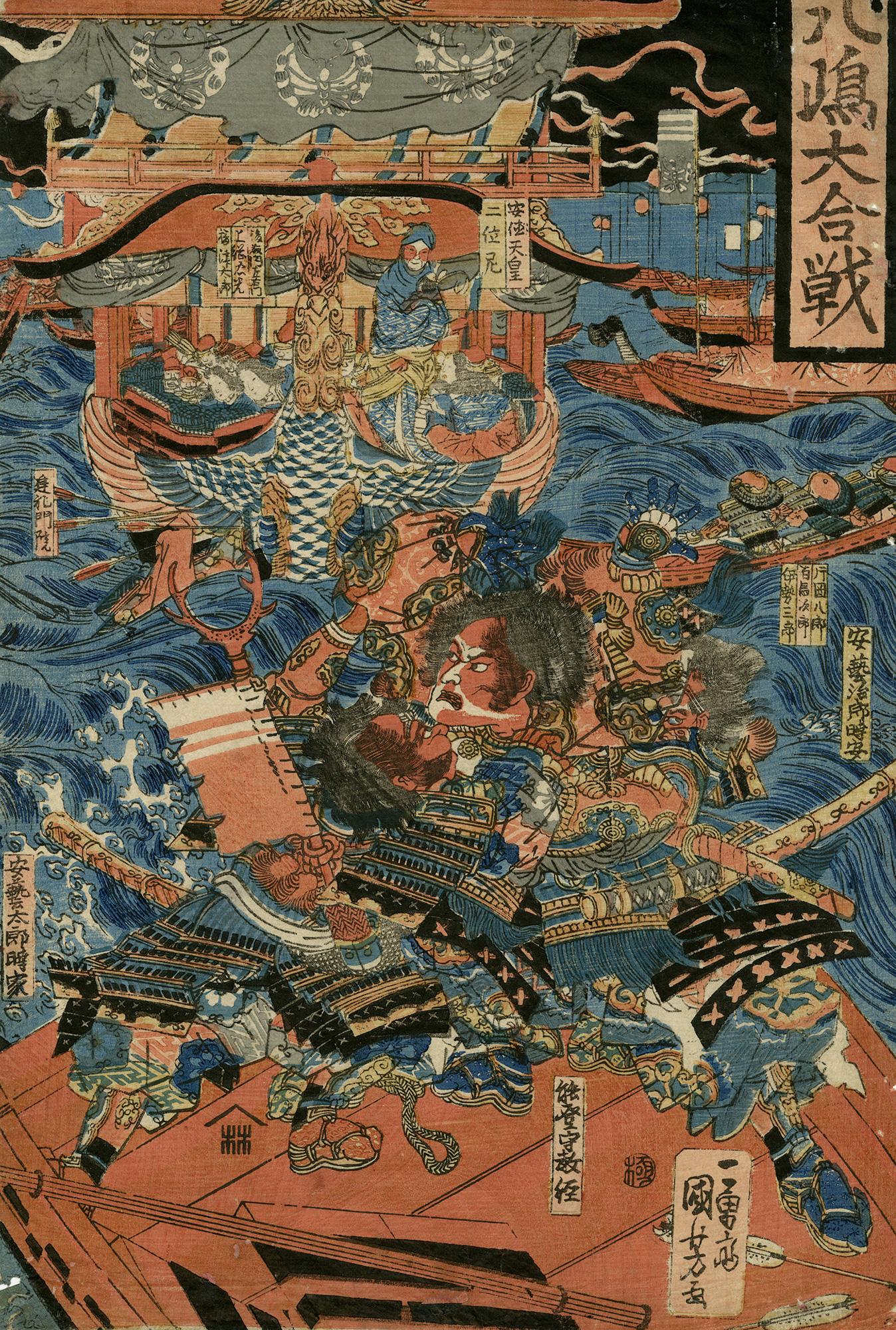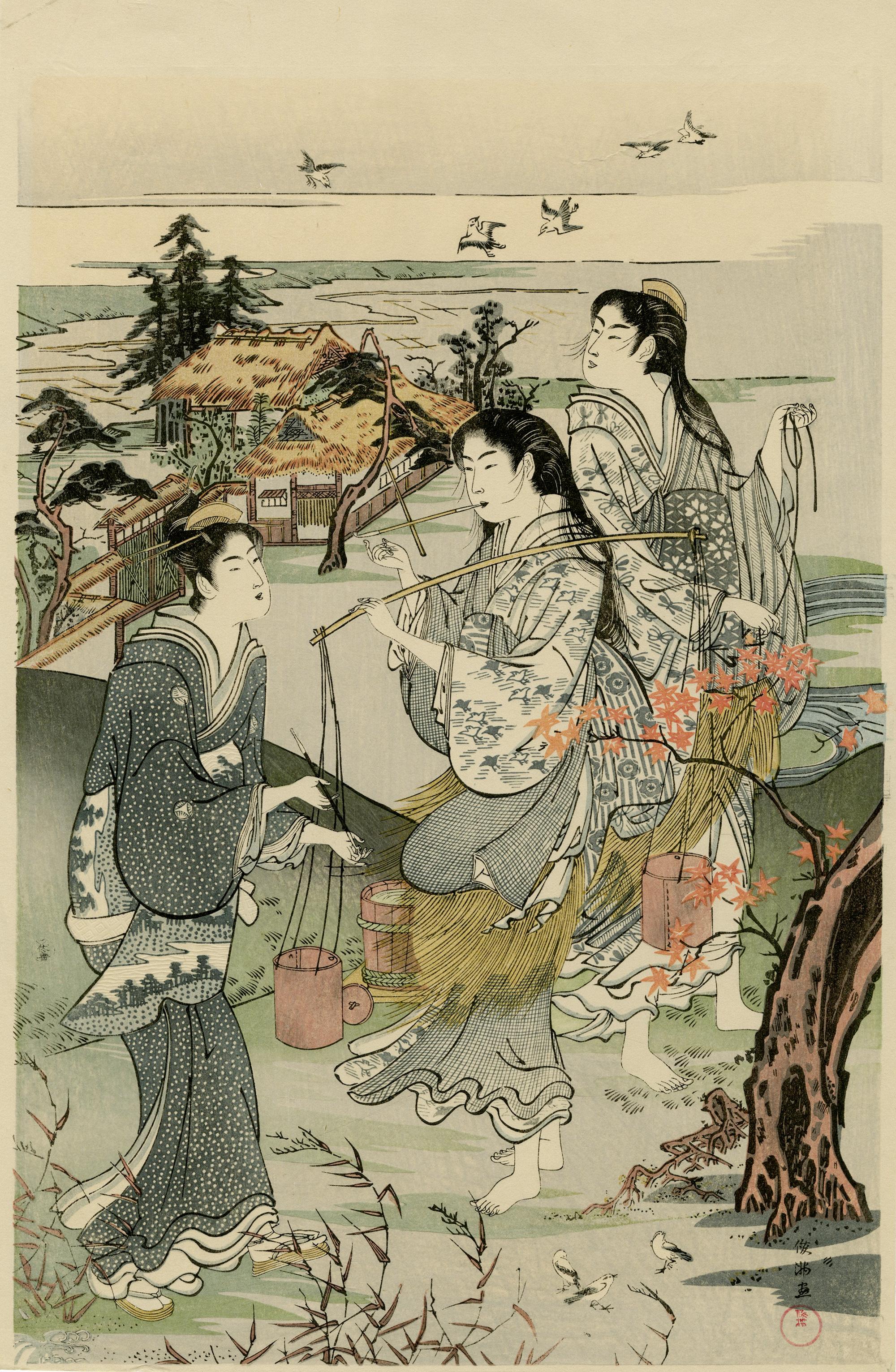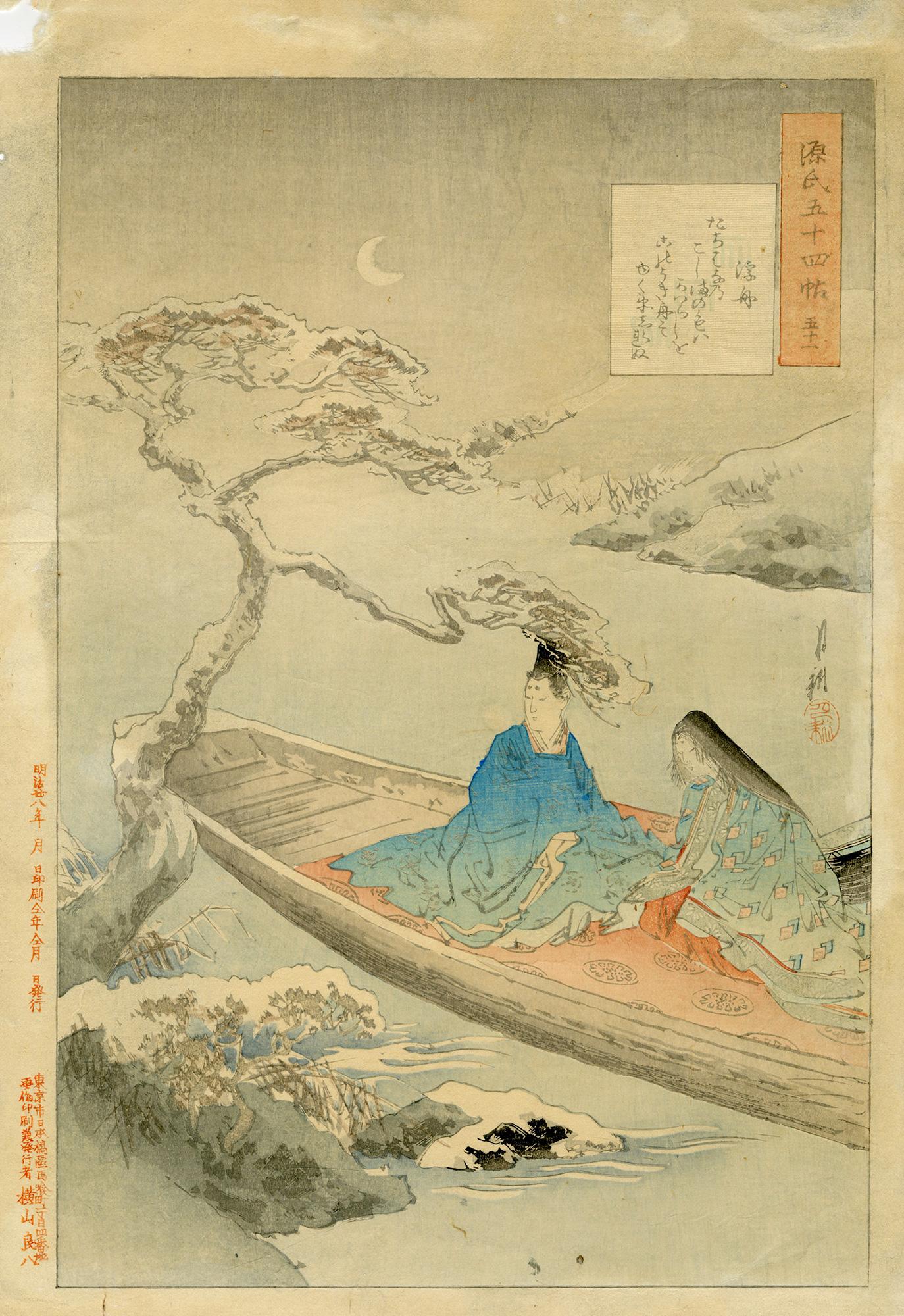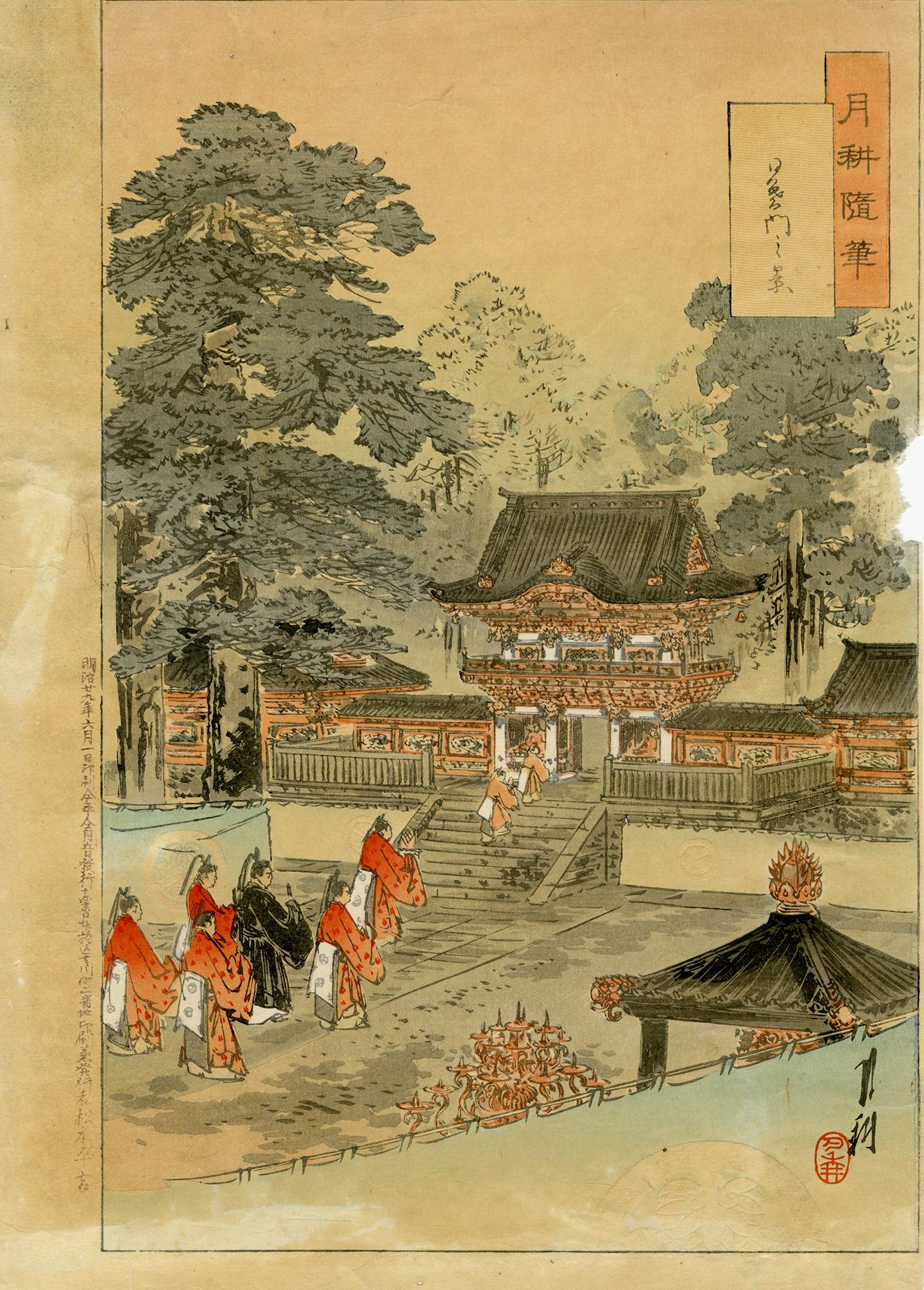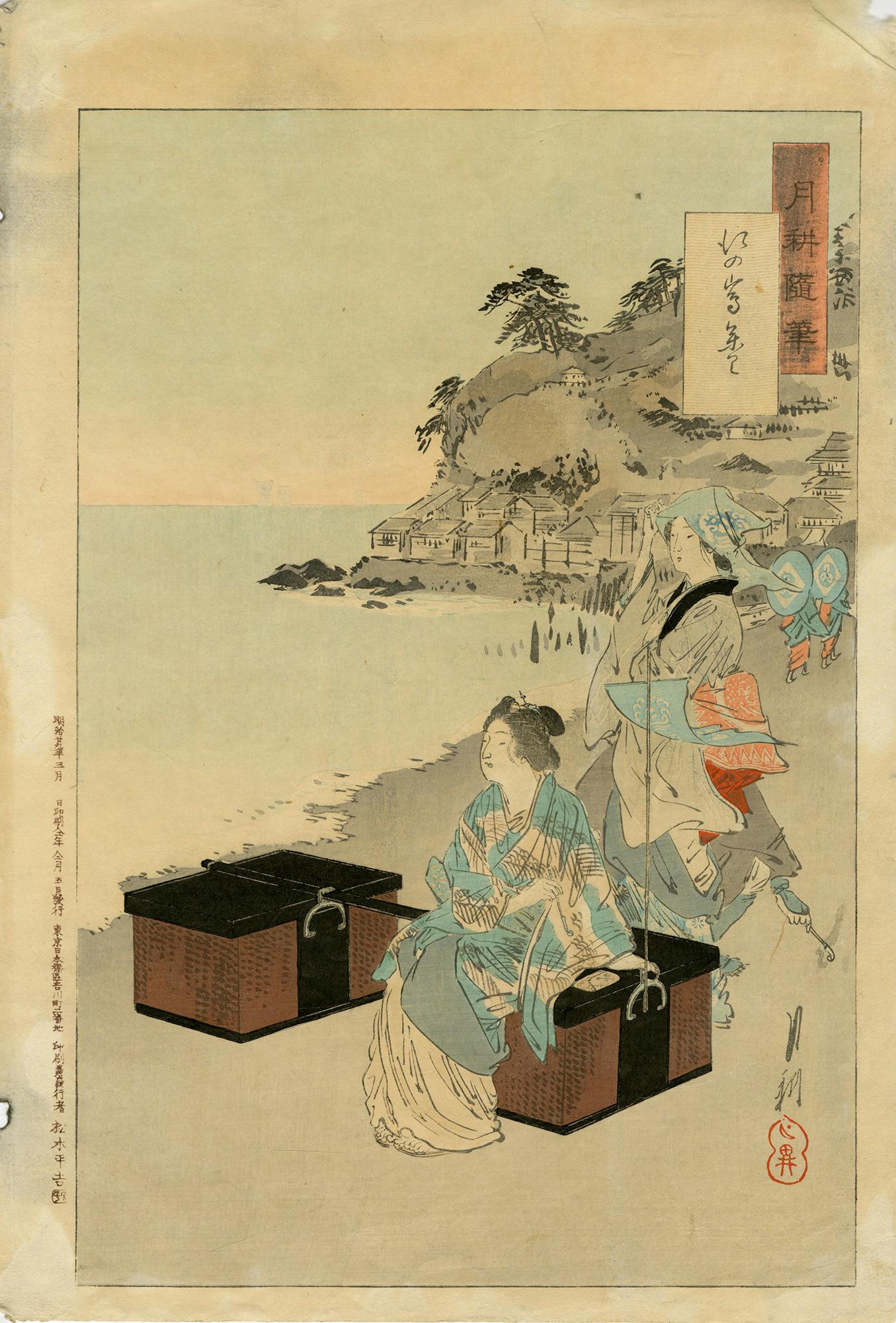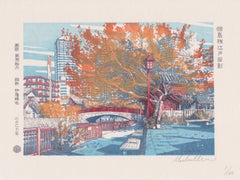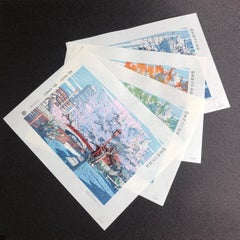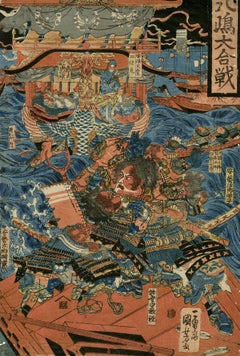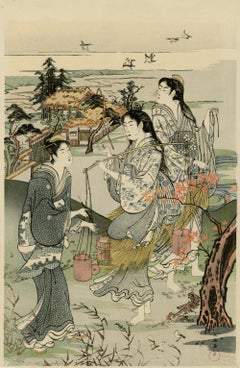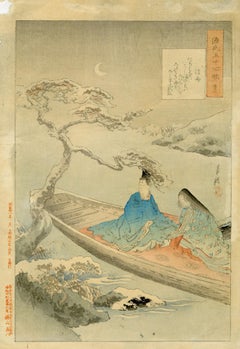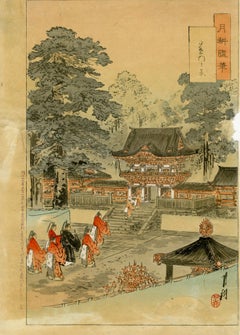Items Similar to Vestiges of Edo in Tsukuda - Spring
Want more images or videos?
Request additional images or videos from the seller
1 of 6
UKIYO-E PROJECTVestiges of Edo in Tsukuda - Spring2020
2020
About the Item
About Vestiges of Edo in Tsukuda (Tsukuda ni Nokoru Edo no Omokage)
Artist: URBANOWICZ Mateusz
Woodcarver: SEKIOKA Senrei III
Printer: ITO Tatsuya
Year: 2020
Our first original landscape ukiyo-e depicting Tsukuda, a neighborhood next to Tsukishima station in the east of Tokyo. This artwork highlights the striking contrast between the modern architecture and historical elements, that co-exist in harmony in Tsukuda today. The Japanese title Tsukuda ni Nokoru Edo no Omokage translates to “the vestiges of Edo in Tsukuda” - the word omokage (vestige) refers to the river, an aspect of old Edo that has continued to exist to this day, despite the fact that other things may have evolved or disappeared with time.
When we trace back the history of ukiyo-e, we can see that there have been many foreign ukiyo-e artists who created important shin-hanga works in the 20th century, such as Paul Jacoulet, Elizabeth Keith, and Noël Nouet. We decided to follow this path in history and welcome Polish artist Mateusz Urbanowicz as the illustrator for this new Tsukuda landscape.
Since ukiyo-e are woodblock prints, it is possible to achieve different colour schemes with a single set of woodblocks, by changing the colour of the inks. We used this unique procedure to create 5 versions, all derived from this set of woodblocks, to express the four seasons (spring, summer, autumn, and winter), as well as a version with the outline only.
Details
Edition: 100 per season and outline
Size: Chuban 7.28 x 9.52 inches (18.5 x 24.2 cm)
Paper: Echizen Kizuki Housho
*Attention
- Each work is signed by the artist.
- Each work is accompanied by a Certificate of Authenticity.
- Once the edition has been fully printed, the same woodblocks will be re-used to hold printing workshops.
- Edition numbers will be chosen randomly.
- Each piece is created by hand, therefore, they may all have subtle differences in size and colour between them. For this reason, at UKIYO-E PROJECT every print is considered unique, aligned with the Edo period philosophy that each ukiyo-e is an “original” piece of work.
- They will be packaged and sent in a specially designed, paper folio.
- The artwork is sold unframed.
- Creator:UKIYO-E PROJECT (2014, Japanese)
- Creation Year:2020
- Dimensions:Height: 7.28 in (18.5 cm)Width: 9.52 in (24.19 cm)Depth: 0.1 in (2.54 mm)
- More Editions & Sizes:Edition of 100Price: $500
- Medium:
- Movement & Style:
- Period:
- Condition:
- Gallery Location:Koto-Ku, JP
- Reference Number:1stDibs: LU2021210460252
About the Seller
No Reviews Yet
Vetted Professional Seller
Every seller passes strict standards for authenticity and reliability
Established in 2014
1stDibs seller since 2022
- ShippingRetrieving quote...Shipping from: Koto-Ku, Japan
- Return Policy
Authenticity Guarantee
In the unlikely event there’s an issue with an item’s authenticity, contact us within 1 year for a full refund. DetailsMoney-Back Guarantee
If your item is not as described, is damaged in transit, or does not arrive, contact us within 7 days for a full refund. Details24-Hour Cancellation
You have a 24-hour grace period in which to reconsider your purchase, with no questions asked.Vetted Professional Sellers
Our world-class sellers must adhere to strict standards for service and quality, maintaining the integrity of our listings.Price-Match Guarantee
If you find that a seller listed the same item for a lower price elsewhere, we’ll match it.Trusted Global Delivery
Our best-in-class carrier network provides specialized shipping options worldwide, including custom delivery.More From This Seller
View AllVestiges of Edo in Tsukuda - Autumn
Located in Koto-Ku, 13
About Vestiges of Edo in Tsukuda (Tsukuda ni Nokoru Edo no Omokage)
Artist: URBANOWICZ Mateusz
Woodcarver: SEKIOKA Senrei III
Printer: ITO Tatsuya
Year: 2020
Our first original landscape ukiyo-e depicting Tsukuda, a neighborhood next to Tsukishima station in the east of Tokyo. This artwork highlights the striking contrast between the modern architecture and historical elements, that co-exist in harmony in Tsukuda today. The Japanese title Tsukuda ni Nokoru Edo no Omokage translates to “the vestiges of Edo in Tsukuda” - the word omokage (vestige) refers to the river, an aspect of old Edo that has continued to exist to this day, despite the fact that other things may have evolved or disappeared with time.
When we trace back the history of ukiyo-e, we can see that there have been many foreign ukiyo-e artists who created important shin-hanga works in the 20th century, such as Paul Jacoulet, Elizabeth Keith...
Category
2010s Edo Landscape Prints
Materials
Woodcut
Vestiges of Edo in Tsukuda - Set of Four Seasons
Located in Koto-Ku, 13
About Vestiges of Edo in Tsukuda (Tsukuda ni Nokoru Edo no Omokage)
Artist: URBANOWICZ Mateusz
Woodcarver: SEKIOKA Senrei III
Printer: ITO Tatsuya
Year: 2020
Our first original landscape ukiyo-e depicting Tsukuda, a neighborhood next to Tsukishima station in the east of Tokyo. This artwork highlights the striking contrast between the modern architecture and historical elements, that co-exist in harmony in Tsukuda today. The Japanese title Tsukuda ni Nokoru Edo no Omokage translates to “the vestiges of Edo in Tsukuda” - the word omokage (vestige) refers to the river, an aspect of old Edo that has continued to exist to this day, despite the fact that other things may have evolved or disappeared with time.
When we trace back the history of ukiyo-e, we can see that there have been many foreign ukiyo-e artists who created important shin-hanga works in the 20th century, such as Paul Jacoulet, Elizabeth Keith...
Category
2010s Edo Landscape Prints
Materials
Woodcut
Vestiges of Edo in Tsukuda - Summer
Located in Koto-Ku, 13
About Vestiges of Edo in Tsukuda (Tsukuda ni Nokoru Edo no Omokage)
Artist: URBANOWICZ Mateusz
Woodcarver: SEKIOKA Senrei III
Printer: ITO Tatsuya
Year: 2020
Our first original landscape ukiyo-e depicting Tsukuda, a neighborhood next to Tsukishima station in the east of Tokyo. This artwork highlights the striking contrast between the modern architecture and historical elements, that co-exist in harmony in Tsukuda today. The Japanese title Tsukuda ni Nokoru Edo no Omokage translates to “the vestiges of Edo in Tsukuda” - the word omokage (vestige) refers to the river, an aspect of old Edo that has continued to exist to this day, despite the fact that other things may have evolved or disappeared with time.
When we trace back the history of ukiyo-e, we can see that there have been many foreign ukiyo-e artists who created important shin-hanga works in the 20th century, such as Paul Jacoulet, Elizabeth Keith...
Category
2010s Edo Landscape Prints
Materials
Woodcut
Vestiges of Edo in Tsukuda - Winter
Located in Koto-Ku, 13
About Vestiges of Edo in Tsukuda (Tsukuda ni Nokoru Edo no Omokage)
Artist: URBANOWICZ Mateusz
Woodcarver: SEKIOKA Senrei III
Printer: ITO Tatsuya
Year: 2020
Our first original landscape ukiyo-e depicting Tsukuda, a neighborhood next to Tsukishima station in the east of Tokyo. This artwork highlights the striking contrast between the modern architecture and historical elements, that co-exist in harmony in Tsukuda today. The Japanese title Tsukuda ni Nokoru Edo no Omokage translates to “the vestiges of Edo in Tsukuda” - the word omokage (vestige) refers to the river, an aspect of old Edo that has continued to exist to this day, despite the fact that other things may have evolved or disappeared with time.
When we trace back the history of ukiyo-e, we can see that there have been many foreign ukiyo-e artists who created important shin-hanga works in the 20th century, such as Paul Jacoulet, Elizabeth Keith...
Category
2010s Edo Landscape Prints
Materials
Woodcut
Vestiges of Edo at Bell Tower - Noon
Located in Koto-Ku, 13
About Vestiges of Edo at Bell Tower (Toki no Kane Edo no Omokage)
Artist: URBANOWICZ Mateusz
Woodcarver: SEKIOKA Senrei III
Printer: ITO Tatsuya
Year: 2021
A former castle town situ...
Category
2010s Edo Landscape Prints
Materials
Woodcut
Vestiges of Edo in Tsukuda - Outline
Located in Koto-Ku, 13
About Vestiges of Edo in Tsukuda (Tsukuda ni Nokoru Edo no Omokage)
Artist: URBANOWICZ Mateusz
Woodcarver: SEKIOKA Senrei III
Printer: ITO Tatsuya
Year: 2020
Our first original landscape ukiyo-e depicting Tsukuda, a neighborhood next to Tsukishima station in the east of Tokyo. This artwork highlights the striking contrast between the modern architecture and historical elements, that co-exist in harmony in Tsukuda today. The Japanese title Tsukuda ni Nokoru Edo no Omokage translates to “the vestiges of Edo in Tsukuda” - the word omokage (vestige) refers to the river, an aspect of old Edo that has continued to exist to this day, despite the fact that other things may have evolved or disappeared with time.
When we trace back the history of ukiyo-e, we can see that there have been many foreign ukiyo-e artists who created important shin-hanga works in the 20th century, such as Paul Jacoulet, Elizabeth Keith...
Category
2010s Edo Landscape Prints
Materials
Woodcut
You May Also Like
The Battle of Dan-no-ura in Yashima, Nagato Province in the First Year .....
By Utagawa Yoshitora
Located in Middletown, NY
The Battle of Dan-no-ura in Yashima, Nagato Province in the First Year of the Bunji Era (1185)
Tokyo c. 1830
Woodblock print (nishiki-e) with ink and hand-coloring in watercolor on handmade mulberry paper, 14 7/16 x 9 15/16 inches (367 x 252 mm), ōban tate-e, the full sheet. In good condition with some handling creases. Colors are fresh and extremely vibrant. The right panel from the triptych by Yoshitora depicting one of Japan's most storied naval battles. An impression of this work may be found in the permanent collection of the Honolulu Museum of Art.
The great naval battle of Dan-no-ura in 1185 was the final climax in a long series of bitter wars between two powerful families in feudal Japan...
Category
Early 19th Century Edo Figurative Prints
Materials
Watercolor, Handmade Paper, Woodcut
Mu-Tamagawa
Located in Middletown, NY
Woodcut in ink with embossing and hand-coloring in watercolor on laid Japon paper, 16 x 10 inches (406 x 253 mm), ōban tate-e, full margins. Scattered handling wear and toning, other...
Category
Late 19th Century Edo Portrait Prints
Materials
Watercolor, Handmade Paper, Woodcut
Courtiers under a wisteria draped pine tree
Located in Middletown, NY
Tokyo: Yokoyama Ryohachi, 1892
Woodcut in ink with embossing and hand-coloring in watercolor on handmade mulberry paper, 14 1/2 x 9 7/8 inches (368 x 251 mm), ōban tate-e, the full ...
Category
Late 19th Century Edo Portrait Prints
Materials
Watercolor, Handmade Paper, Woodcut
Toshogu Shrine
Located in Middletown, NY
In image of the Tokugawa family paying homage to Tosho-gu Shrine in Nikko.
Tokyo: Matsuki Heikichi, 1896
Woodcut in ink with embossing and hand-coloring in watercolor on handmade m...
Category
Late 19th Century Edo Figurative Prints
Materials
Watercolor, Handmade Paper, Woodcut
Pilgrimage to Enoshima
Located in Middletown, NY
Tokyo: Matsuki Heikichi, 1893
Woodcut in ink with embossing and hand-coloring in watercolor on handmade mulberry paper, 14 1/2 x 9 7/8 inches (368 x 251 mm), ōban tate-e, full margi...
Category
Late 19th Century Edo Portrait Prints
Materials
Handmade Paper, Watercolor, Woodcut
Edo Landscape Japanese Woodblock Print
By Utagawa Hiroshige (Ando Hiroshige)
Located in Houston, TX
Edo Meisho woodblock print of a famous Japanese coastal dock. This woodblock is most likely apart of the series "One Hundred Famous Views of Edo." The woodblock print is printed on r...
Category
1850s Edo Landscape Prints
Materials
Woodcut
